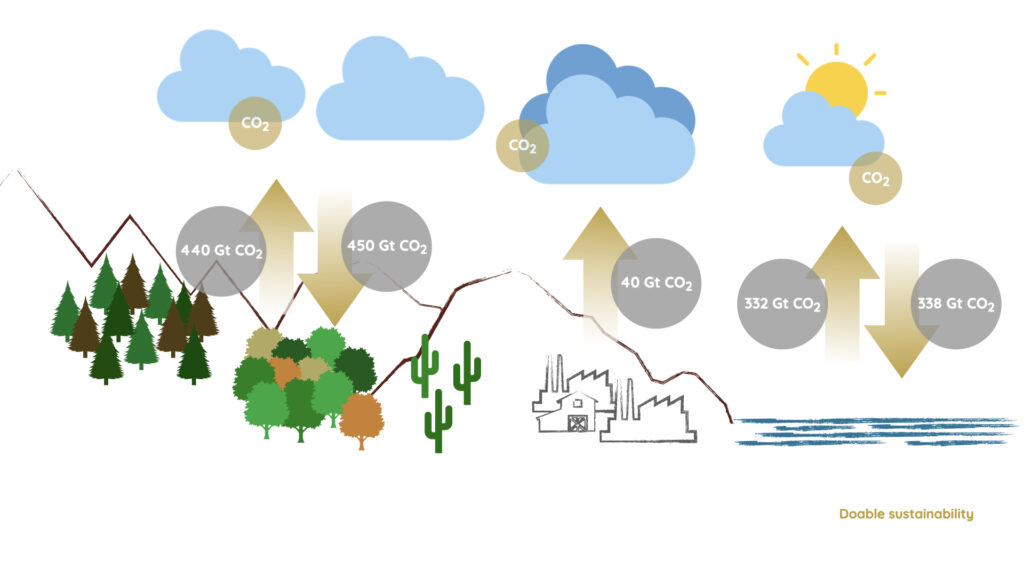To the question of whether we will save ourselves from climate change by planting trees, unfortunately the answer is no. Although it is a good tool, more needs to be done.
Following the Paris Agreement in 2015, it became clear that climate change per se could not be avoided, but that action should be taken to mitigate its effects. To this end, one of the clear objectives is to try not to increase the average global temperature by more than 2°C.
As the relationship between CO2 emissions and global warming is well known, both governments and private or community initiatives have started to move in that direction, proposing an endless number of proposals, one of the most popular being tree planting.
UK has developed a short-term planting program that is proving to be a success; the US Department of Agriculture is following up on a Program through donations; China is fighting climate change through its Great Green Wall program; programs such as the trillion tree campaign are working as well, etc.
A singular proposal
Life cycle of plants is generally considered to be a carbon sink. If the problem is excess CO2 in the atmosphere, why not plant trees? That would be the most feasible solution.

Source: NASA
In principle this natural solution sounds good, in fact it is the most economical in absolute terms. However, other factors have to be considered that also affect the final result.
Plants as living creatures
Plants are indeed living beings: they are born, grow, die and finally decompose releasing CO2. The CO2 absorption they can make is considered neutral in the sense of their life cycle.
The fact that they are considered as carbon dioxide sinks, is because, in adult life they usually capture more CO2 than they expel to the atmosphere, so, in the short term it could serve as a palliative to the problem.
However, we have to take into account that, as living beings, they can have diseases, plagues, drought, other accidents such as fires or simply die. Then, these large CO2 sinks immediately become emitters.
The space to be occupied
According to a study carried out by ETH-Zurich on 78,000 forests, there is an area of 900 million hectares that could be used for this project. This is equivalent to an area similar to the USA.
However, it seems that this space should be larger as the study data overestimated the amount of CO2 that would be absorbed by the trees.
And, where to plant them, would be the next question. For plantations to be successful, the conditions of the land should be considered: water, light, soil type, etc. Some people say that the optimum would be in the tropics, because trees grow faster. But is there enough surface area in the tropics for this purpose?
Time, that great parameter
The calculations of CO2 absorption are always made with parameters of adult trees, because that is when they function as such.
How long must we wait for this action to take effect? Well, a tree, depending on the species, takes about 40 years to become an adult.
So, what do we plant?
Whenever this topic is discussed, it is taken for granted that trees should be planted, but why agriculture does not function as a carbon sink. Basically, because all the processes related to agriculture are more polluting than the absorption of the crop itself: fertilizers, agricultural machinery, etc.
Knowing what to plant, where and how are the main questions of this macro reforestation project. What to plant is subject to where it is planted. A region with prolonged droughts is not the same as an area with a higher concentration of rainfall, because the type of plant to be reforested will be different.
Other factors such as soil type, terrain (whether flat or rugged), light and other natural parameters would affect the choice of species. And, as a consequence, the budget.
What do we do, then?
Taking the trees as the main responsible for the solution to the problem is, at the very least, ill-advised.
Proposing a combined measures scenario would be the smartest thing to do, instead of betting everything on one card: Reducing CO2 emissions from fossil fuels, establishing technological solutions that act as CO2 traps such as CO2 absorption machines, as well as reforestation.
References & Resources
- IPCC
- NASA
- Science, (May 2020) Erratum for the Report: “The global tree restoration potential”
- ETH Zurich (July 2019) How trees could help to save the climate*
- Science, (July 2019) The global tree restoration potential
- PNAS, (April 2007) Combined climate and carbon-cycle effects of large-scale deforestation
- ATTRA (2009) Agriculture, Climate Change and Carbon Sequestration
- Unplash – John Towner



